Any dacket seeks to make your garden cozy and at the same time impressive, majestic. There is an easy way to achieve these effects - to sear the curly plants on the site. With their help, you can decorate the arch or pelnogue, zoning the land weaving, hide not the most attractive buildings on the site and finally, the oscillage to transform the garden. Today the article will tell about the types of curly plants and how it is better to choose a support for them.
Types of curly plants
In nature there are quite a lot of varieties of curly plants for the garden. Every one in its own way and exotic. What kind of plant to choose for your own site? On this question you can find the answer only purely individually. For example, if you are a novice gardener, it is better to give up the whimsical "tops", and stop your choice on less demanding species. In this case, it is easiest to grow fragrant polka dots, Liana, IPOME. Lemon and Aktinidia are more troublepret. And plants like wisteria, plenty roses or curly hydrangea will require a lot of attention to themselves. In any case, on which one to stop your choice is a matter of taste. Many experienced gardeners have already defined a list of favorites. Below are the names of the curling plants that enjoy the greatest popularity and their characteristics.
Perennial curly plants
Pleet rose
The plenty rose appeared as a result of crossing garden roses with wild relatives. This wonderful plant has small, up to five centimeters in diameter, flowers, with a weak gentle aroma. Quite large inflorescences are placed on arc-shaped shoots with small rigid sheets, so they require a solid support. Bloom mostly once a year for 30-40 days, but there are varieties that have been re-bloom. The most favorite dackets of the variety:
- "Ecelosis" (red flowers);
- "Dorothy Perkins" (pink flowers);
- "Aloha" (salmon-pink flowers);
- "Drimin Spears" (yellow);
- "VaytKuked '(white flowers).
It is worth noting that climbing roses quite capricious plant, especially in the first year of life. Require regular watering abundant, gentle sunshine, while in winter the additional insulation. In addition, during the growth Pagon you from time to time will have to guide them to the rose did not take the form of a very beautiful, but still the usual bush.
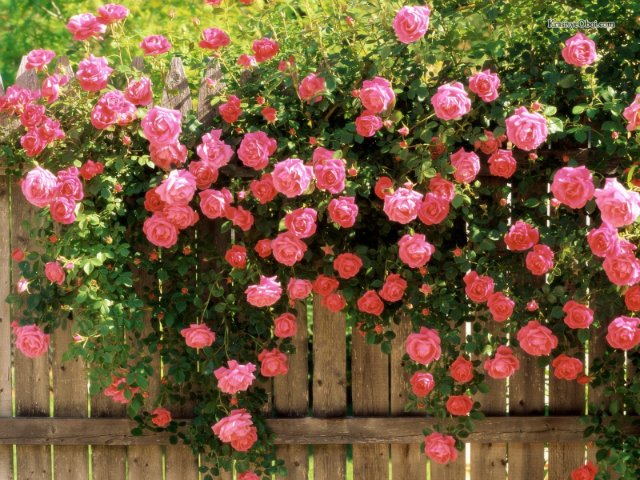
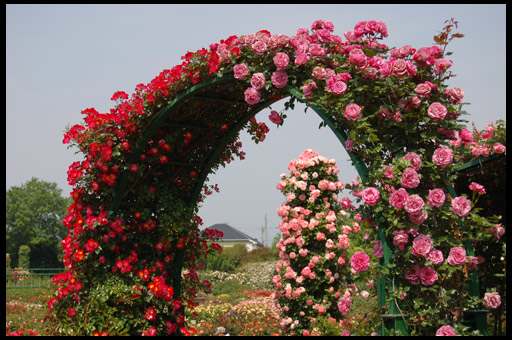
Parthenocissus
Maiden grapes represents branched ligneous liana. It reaches up to 20 meters in length. Every single "branch" has a complex structure of branched antennae with suction cups, which are attached to any just any poverhnosti.Blagodarya last, girlish grapes can green the facades of houses and other buildings without any additional support.
The main decoration of this plant is the leaves. During the warm period, they have a juicy green color, and the first cold is changed by color. Purple and red shades appear, thus form a motley mosaic. Fruits, thanks to the small size, it also looks quite decorative. They stay on branches to the last fallen leaf.
The greatest value of the virgin grapes in the horticultural circles is the speed of its growth. So, in just one or two seasons, he can cover the entire territory designated by you. Moreover, this plant is very unpretentiously: it grows both in the sun and in the shade, without compromising cold winters. Great for creating live hedges, masking of unattractive buildings, etc. The varieties are popular:
- "Engelmani";
- "Weituchi Boskup";
- "Weituchi Robust";
- "Green Sprint" and others.
By the cons of the maiden grapes include the fact that the plant creates very much and requires frequent trimming and tapping. In general, this unpretentious Liana fits perfectly into any interior and pleases not only the eyes, but also the soul of the gardener.
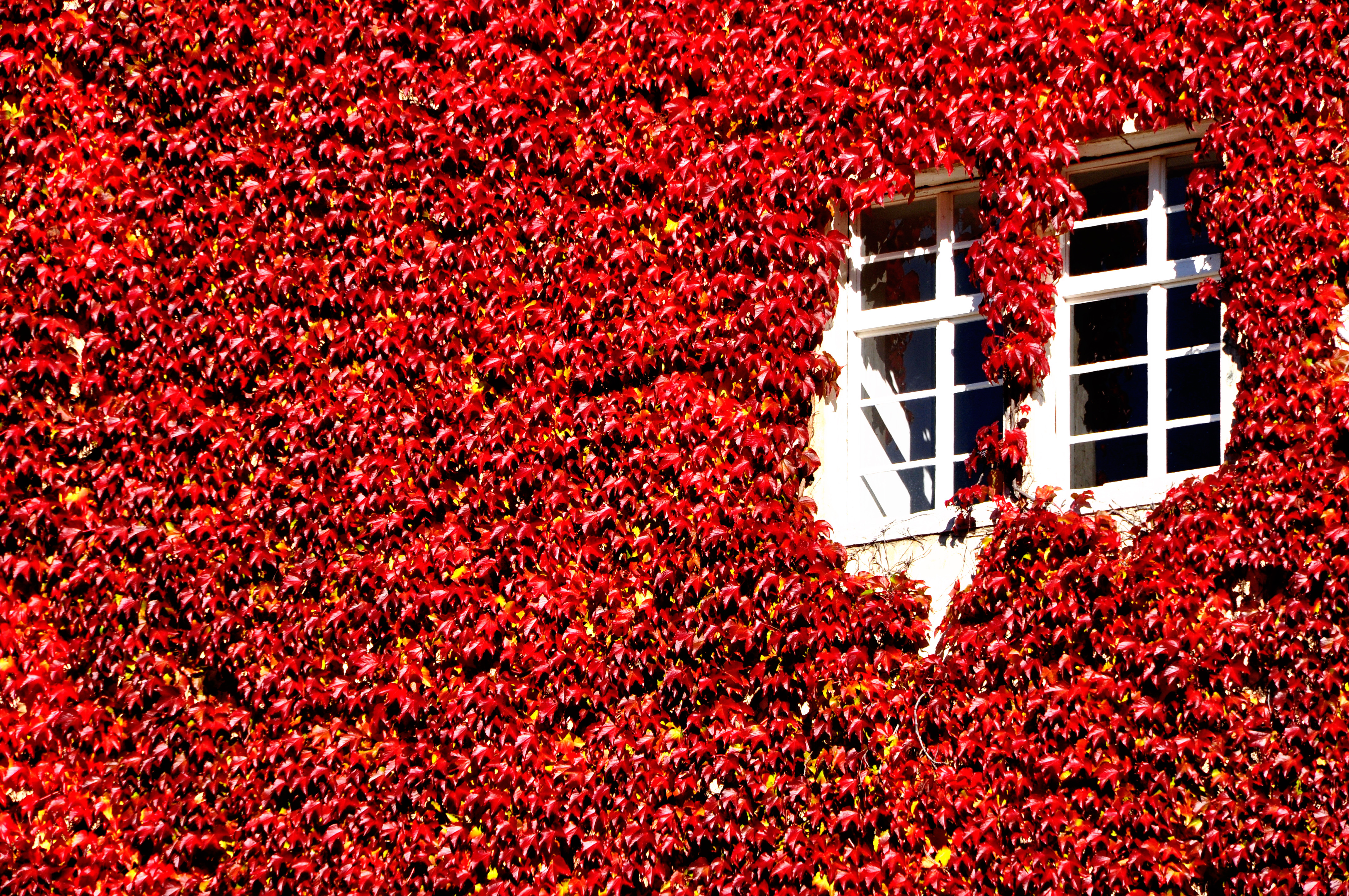
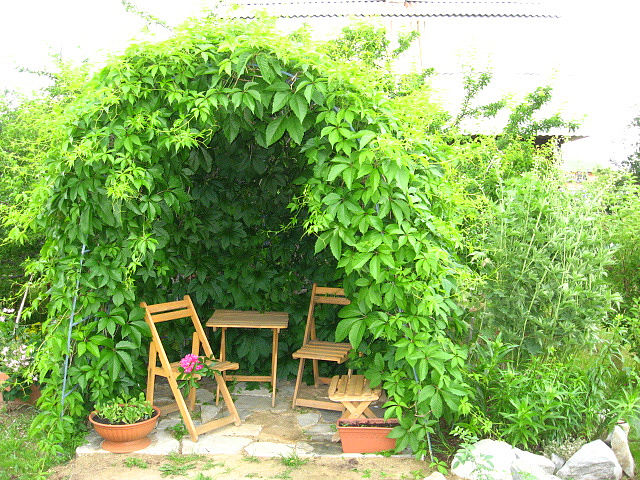
Honeysuckle
Honeysuckle or, as it is also called, Lomonos is often used for vertical decoration of land. This plant is rightfully considered a curly shrub and reaches a height of two or three meters.
Most often, the honeysuckle is used to zoning the garden or as a living hedge. It is worth noting that the gardeners are found, which, with the help of the honeys, are decorative labyrinths in the garden, but in this case you will have to trim and tapping the naughty hard branches.
The undoubted advantage of Lomonos over other curly plants is its unique fragrance. Thanks to this quality, summer residents often choose this plant to arrange recreation area. In addition, some types of honeysuckle bring valuable fruits - useful dark blue berries. Most popular species:
- "Altair";
- "Kyulopan";
- Roxana;
- "Start";
- "Morena" and others.
It is also worth mentioning another advantage of this plant - it is extremely unpretentious, it is growing in any weather conditions regardless of whether this area is solar or it is in the shade.
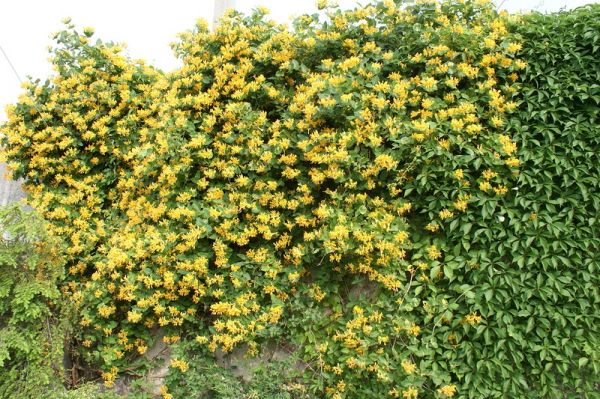
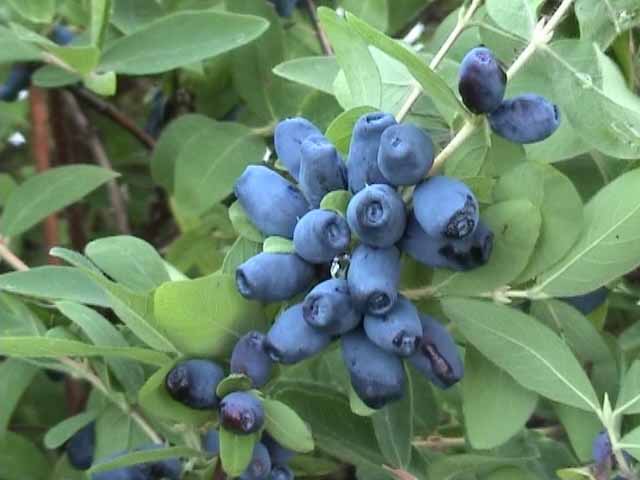
Ivy
Ivy is one of the most popular curly plants. It is noteworthy that it began to be used as a viewman in the Middle Ages. Then he was additional support for buildings and protected naked walls from the harmful effects of strong winds.
Unfortunately, many gardeners have now forgot about this beautiful plant, but, nevertheless, true connoisseurs of landscape decor resort to ivy services in every way. In general, ivy is an evergreen creeping plant. Lena Lian can reach 20 meters, and in the open soil grows up to 30 meters. The leaves have a juicy dark green color and a glossy surface. Roots dug deep into the earth and tightly fix there with a powerful root system.
As mentioned above, Ivy remains green throughout the year and grow up, creating a thick carpet. Due to this, the plant is often used to mask unattractive buildings. Most common:
- ivy canary;
- ivy.
Despite the fact that the plant is extremely not demanding to the environment and can grow even in the city, there is still a small list of conditions for good growth. First of all, it is worth noting that Ivy does not tolerate excess moisture, loves fertile alkaline substrates. Surrive as in the shade and in the sun.
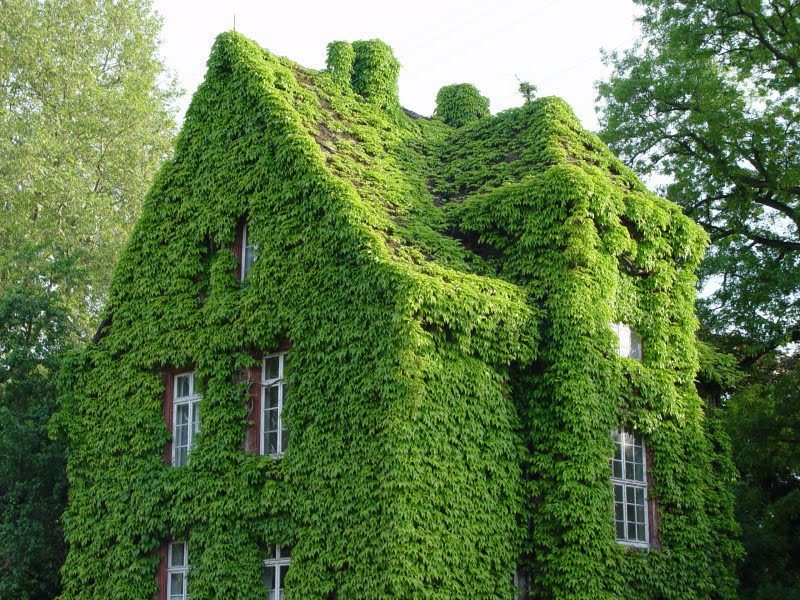
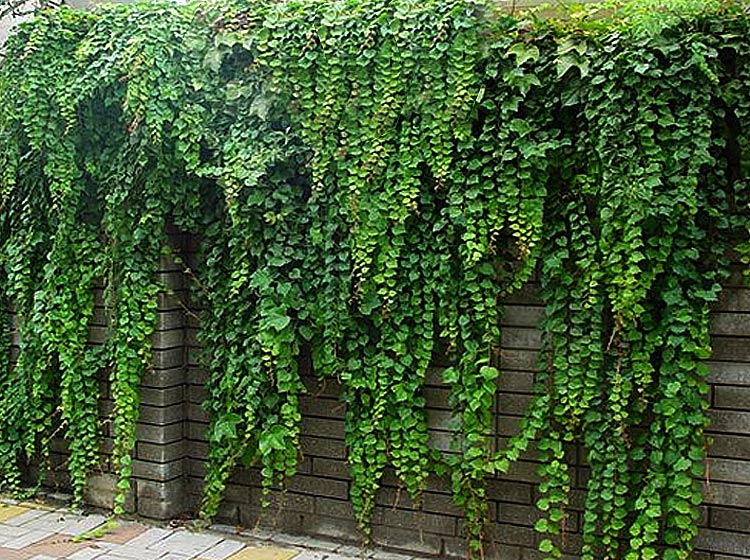
Glicia
This plant is in demand and in circles of experienced gardeners, and newcomers in this matter. Remember the wonderful tree of life from the movie "Avatar"?! So, it was wisteria, only in the woodwork.
Wisteria - leaf falling lianas. Their main value is in openwork foliage, which falls to Earth. This plant is simply ideal for decorating terraces, arbors, fences, balconies or walls. Also a large feature of this plant is extraordinary flowering. Flowerines look like brushes and can reach the length of 50 centimeters. Unfortunately, grow it in our climate is quite difficult. All two varieties will adapt to it:
- glicinia resentment;
- glicinia is large-acid.
Wisteria for full growth needs to be cut it. Most often do it twice a year. If you are interested in this plant, be sure to study the peculiarities of care. After all, it depends not only to the vitality of the view, but also its appearance.
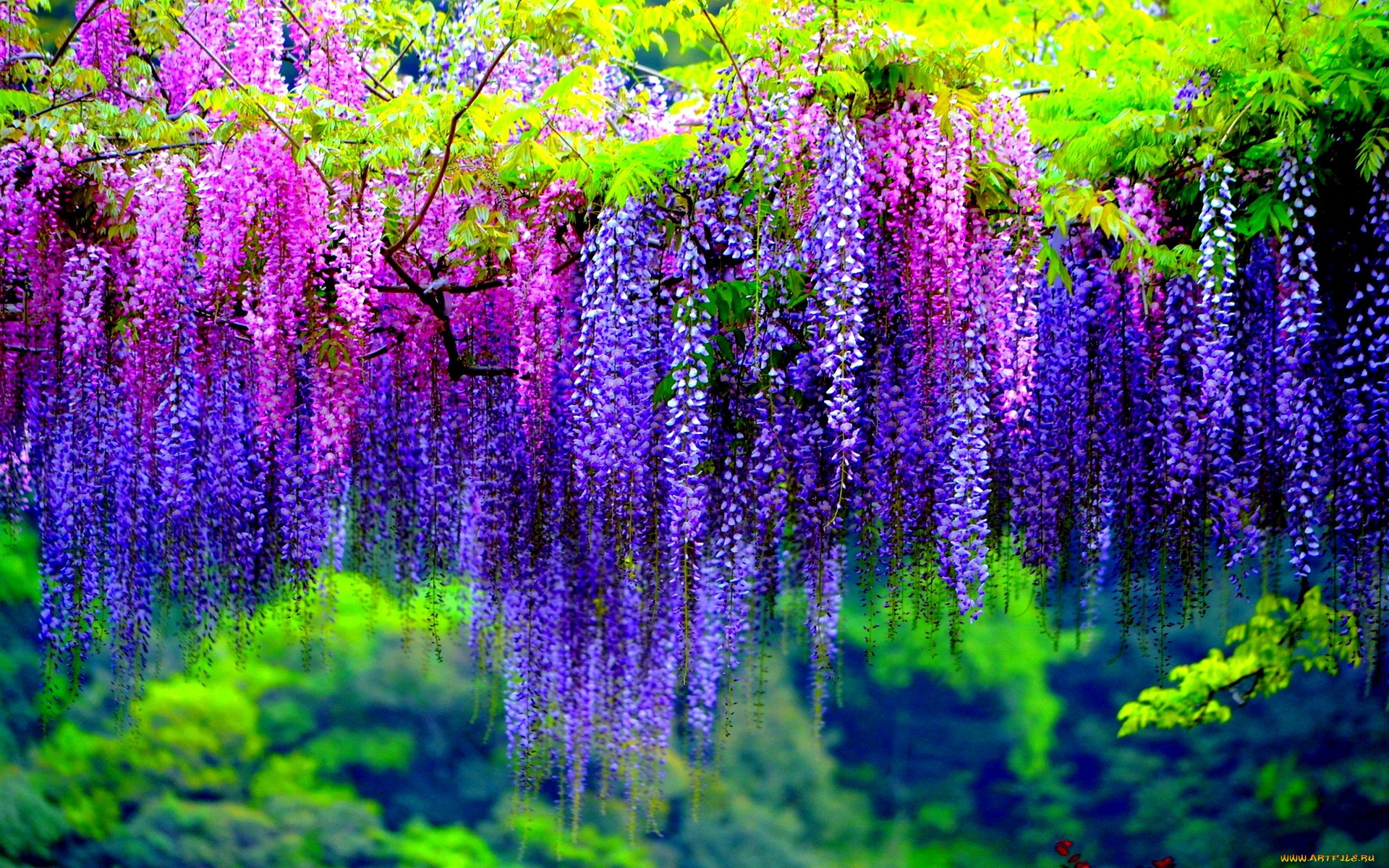
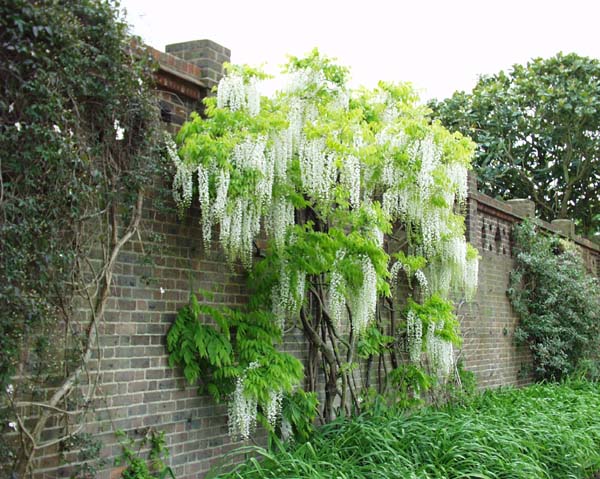
Annual curly plants
All of the above specimens are perennial curly plants. The altars are practically not in demand, as they do not have time to grow on the garden and look pretty scoop. Nevertheless, you should not leave them without attention. Below are the names of the most popular species, a brief description and photo of curly plants of one year of life.
IPOMEY
This plant is often used to landscap the trunks of the tree. Using a flower thus will make your garden fabulously beautiful. Ipomay is growing enough quickly, during the season the length of the stems reaches 3-4 meters. The plant has a very decorative look: the leaves in the shape of a heart, heavenly blue, blue, purple, pink, white or motley flowers. Popular varieties:
- "Serenade" (terry);
- "Malkie Wei";
- "Rositte";
- "Schoolgirl";
- "Grend PA";
- "Picotics."
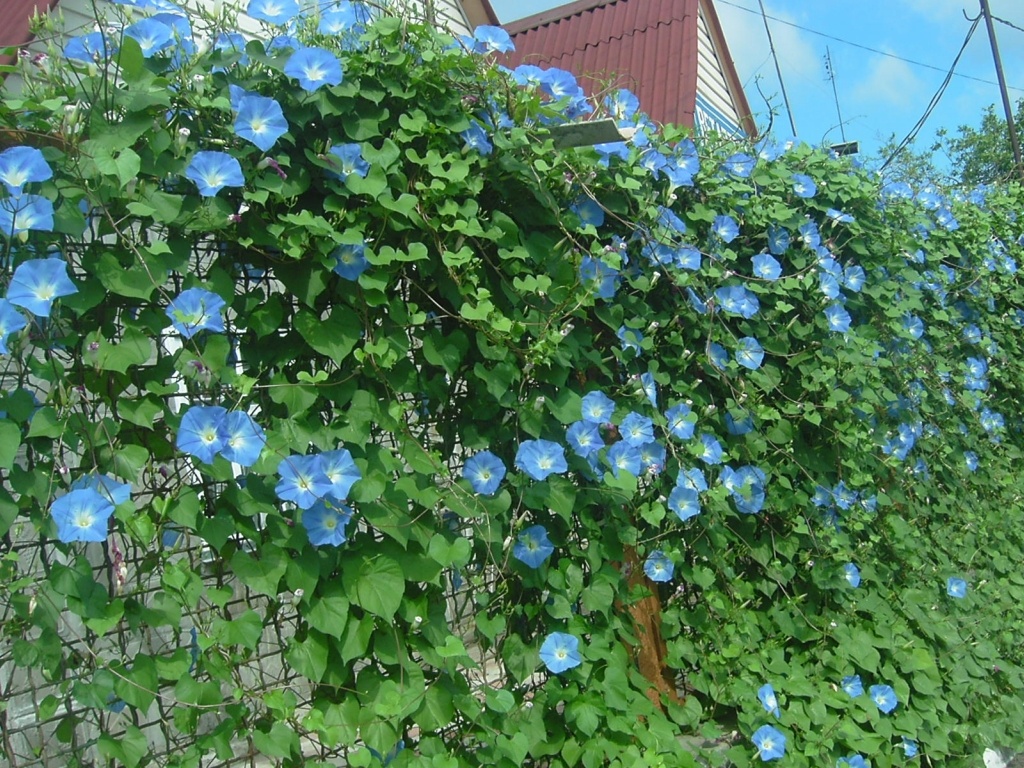
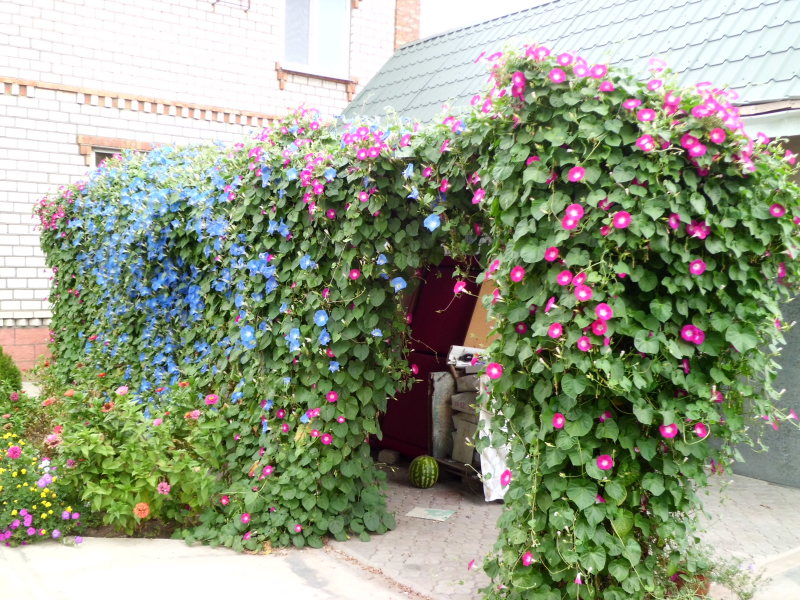
Nasturtium
Nasturtium - plenty of flowering plant. Perhaps she fell in love with gardeners. It grows very quickly, the stalks reach 3 meters. It is well adaptable as both sunny areas and a half. Flowers are different colors: red, orange or yellow. It is worth noting that this plant needs an additional support. It can serve as a grid, a staircase or fence. Also, the nasturtium can form a decorative carpet in the garden. Most popular varieties:
- "Vesuvius";
- "Day and night";
- "Cherry Rose";
- "Terry mix";
- "Alaska";
- "Yeti".
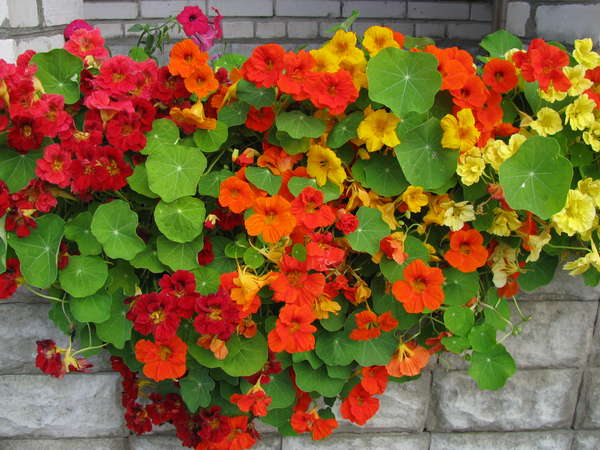
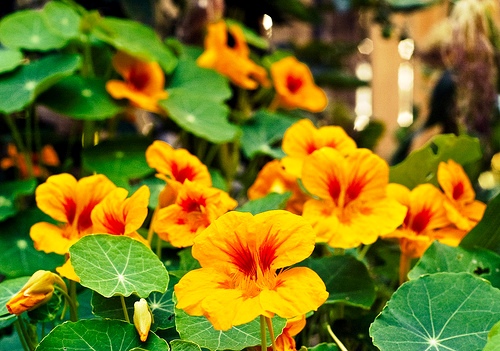
Sweet pea
This plant rightfully entered the top three leaders among one-air. It has gained particular popularity in recent years and now it can be seen almost in every garden. Easy peas is often used for vertical landscaping. It grows about two meters, unfortunately, not very fast. The plant loves solar, protected from the wind place. This view has branched mustache, which is clinging for any supports. Beautifully framed fences and stairs. Varieties:
- "Alice";
- "Garnet";
- "David";
- "Cremona";
- "Selektzvet".
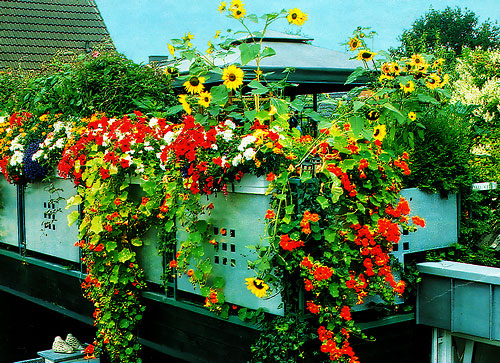
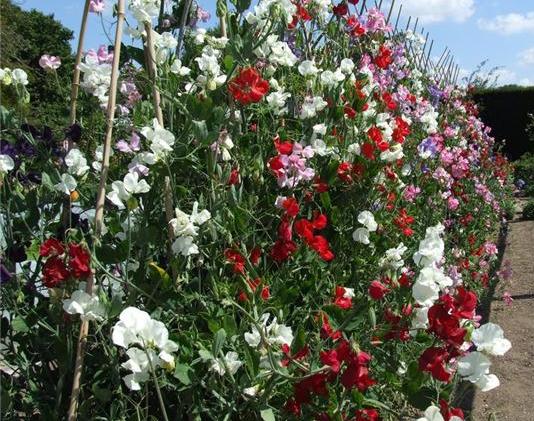
Justify the monkey in its garden simply. Enough curly plants to buy in the form of seedlings and grow in special tanks before landing in the ground.
Rules for choosing support
Deciding with a curly plant for the garden, you need to prepare for him support. This component will directly depend on the appearance of your green "carpet". The main thing is that it is necessary to take into account - the design should be very strong to withstand the impulses of strong wind and shower. Several rules of the structure of the supports for different types of plants.
- Plants that have a "lazewing" nature of the Vities do not necessarily build special designs - they are also hammering at any rough surface. In this case, the laying of brick or stone is perfect. Such "cold" plants include girlish grapes, Campxis, Ivy, and others.
- Casting covenants are also starting to gain altitude, only feeling any surface. It is well suitable for a fine grill, a grid or a conventional stretched wire. These plants include fragrant peas, wild cucumber, tladyanta, etc.
- Relying Lians necessarily require additional design. They need vertical or inclined supports, otherwise the plant will simply spread out on the ground. Excellent are suitable for maintaining relying views Arches, Pergolas, Trelliers. Also well such Liana look in suspended porridge or baskets. Removable plants include wisteria, honeysuckle, clematis, hops, etc.
- But for the arrangement of decent conditions of "living", half-mongs need to build not only auxiliary supports, but also attachments to them, since these plants cannot independently. Poland roses, raspberries and others include half-wishes.
Hutting on his garden plot of fusing plants, you make it hundreds of times more beautiful. The main thing is not to forget how to care for the binds: fertilize, rug, remove flashing inflorescences and damaged leaves. In gratitude, your garden will freeze the green or colorful "carpet" of natural beauty.

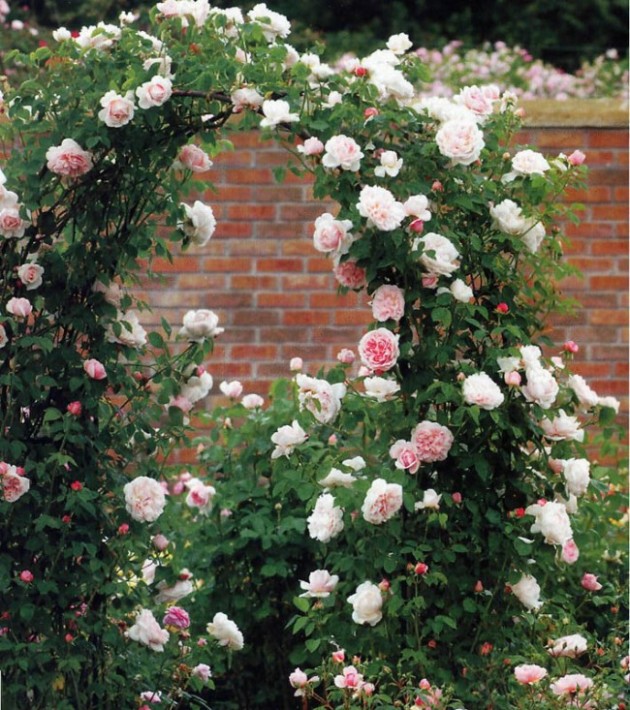












 Start a discussion ...
Start a discussion ...